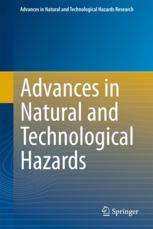
This chapter of the Advances in Natural and Technological Hazards Research book series demonstrates applications of the InVEST (Integrated Valuation of Ecosystem Services and Tradeoffs) tool in data-deficient countries where UN Environment is currently implementing ecosystem-based field interventions to reduce disaster risk.
Despite a growing international awareness of the linkages between ecosystem conditions and disaster risk reduction (DRR), national and local decision makers often lack the tools to visualize disaster risk under different ecosystem conditions. As a result, the importance of ecosystems continues to be under-appreciated in decision-making processes related to DRR and climate change adaptation. While spatial models have commonly been applied in both ecological assessments and disaster management, there have been relatively few studies that merge these two applications.
The InVEST software provides spatial tools for assessing ecosystems and disaster risk, even when limited data is available. The first study presented in this chapter takes into consideration the role of coastal and marine ecosystems in reducing exposure to coastal hazards in a small municipality in the south of Haiti. It provides an example of a qualitative assessment of exposure to storm surges and coastal flooding under different ecosystem management scenarios. The second study examines realistic land use change scenarios such as reforestation and urbanization and their impacts on soil erosion and sedimentation in a river basin in the Democratic Republic of the Congo (DRC). Through detailed examination of the two case studies, this chapter aims to demonstrate how integrated models such as InVEST could function as decision support tools for considering ecosystem-based solutions for DRR and climate change adaptation. The limitations, challenges, and areas for improvement of each model application as well as implications for local decision-making and awareness-raising are discussed.



